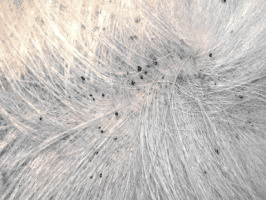Unleash Your Power: Master the Art of Spotting Fleas on Dogs

Learn how to detect fleas on dogs and prevent a parasite infestation
If you’re a dog owner, it’s important to detect fleas on dogs and in your home. Fleas can cause misery for both pets and their owners, so it’s best to nip them in the bud as soon as possible. In this blog post, we’ll look at how to spot fleas, and the symptoms they can cause in pets. So read on to find out more! We’ll discuss how to treat and prevent fleas in the next post, so don’t miss it!
Fleas are quick and are great escape artists. They have wings, but they can’t fly. Instead, they can jump 110 times their length! A single female flea can lay and hatch 2000 eggs in their entire lifespan (about 100 days). Think about how many fleas could reproduce in your home if your dog brought in 10-20 fleas from the outdoors.
If you notice your dog scratching, shaking its head, and biting itself non-stop, then there’s a high chance that it may have some fleas. Of course, these symptoms alone aren’t a sign of fleas, as itchiness can also be caused by allergies and many other conditions. A closer inspection of the skin will tell if they’re infested by these pesky critters.
How to Spot Fleas: A Step-by-Step Guide
1. Gently part the fur with your fingers to expose the skin and look closely. Keep your eye on one area for a few seconds before moving to another area. You can use a flea comb near the dog’s skin to comb through for any fleas.
2. Look inside their armpits, in private areas, and inside their ear flaps as those spots are warm and hidden away. Fleas thrive in these environments and they make for a great breeding ground.
3. Look for flea dirt, also known as flea poop. They can look black and powdery. If you think it’s flea dirt, take some off your dog’s skin and put it on a piece of white paper towel or tissue. Sprinkle a small amount of water over it. If it bleeds a dirty reddish-brown color, it’s likely flea dirt.
Checking for fleas on your dog is an important step in preventing them from becoming an infestation. By inspecting the skin and looking in hidden away spots, you can catch any fleas before they become a problem. In our next blog post, we will discuss how to treat and prevent fleas. Be sure to check back soon!
Is Your Dog Depressed? Dogs are sentient creatures that can feel a wide range of emotions, just like humans. Unfortunately, one emotion dogs can feel…
Christmas Gift Ideas for Your Pets The holiday season is a time for giving, and our beloved pets are an important part of our families.…
Dogs need exercise in order to stay healthy, just as humans do. This blog post is all about making sure that our canine friends get…




